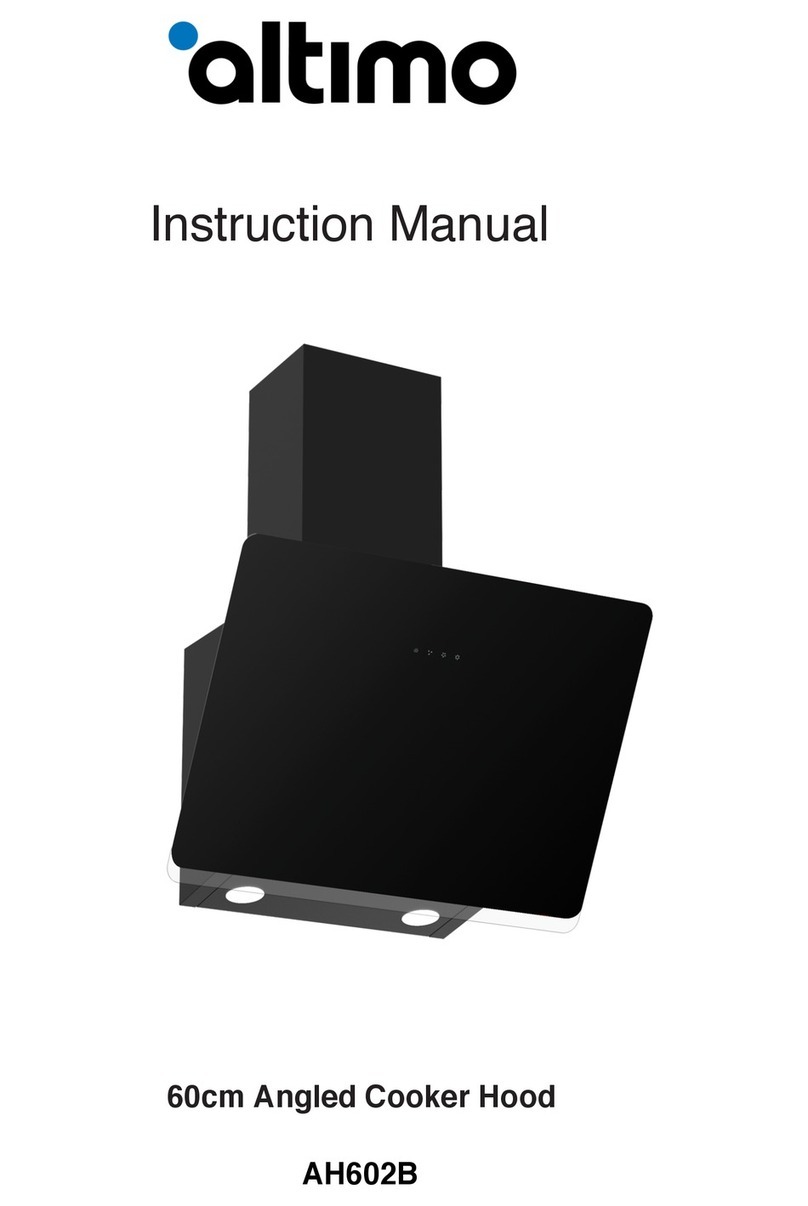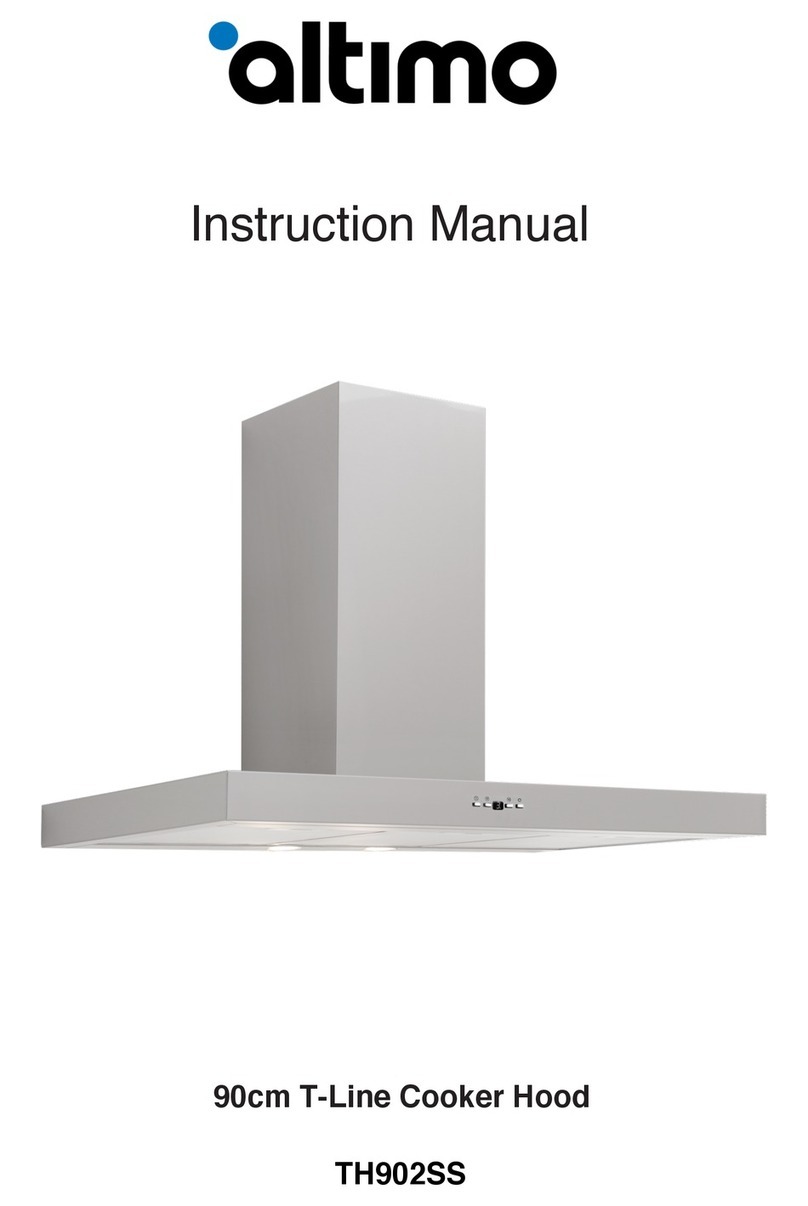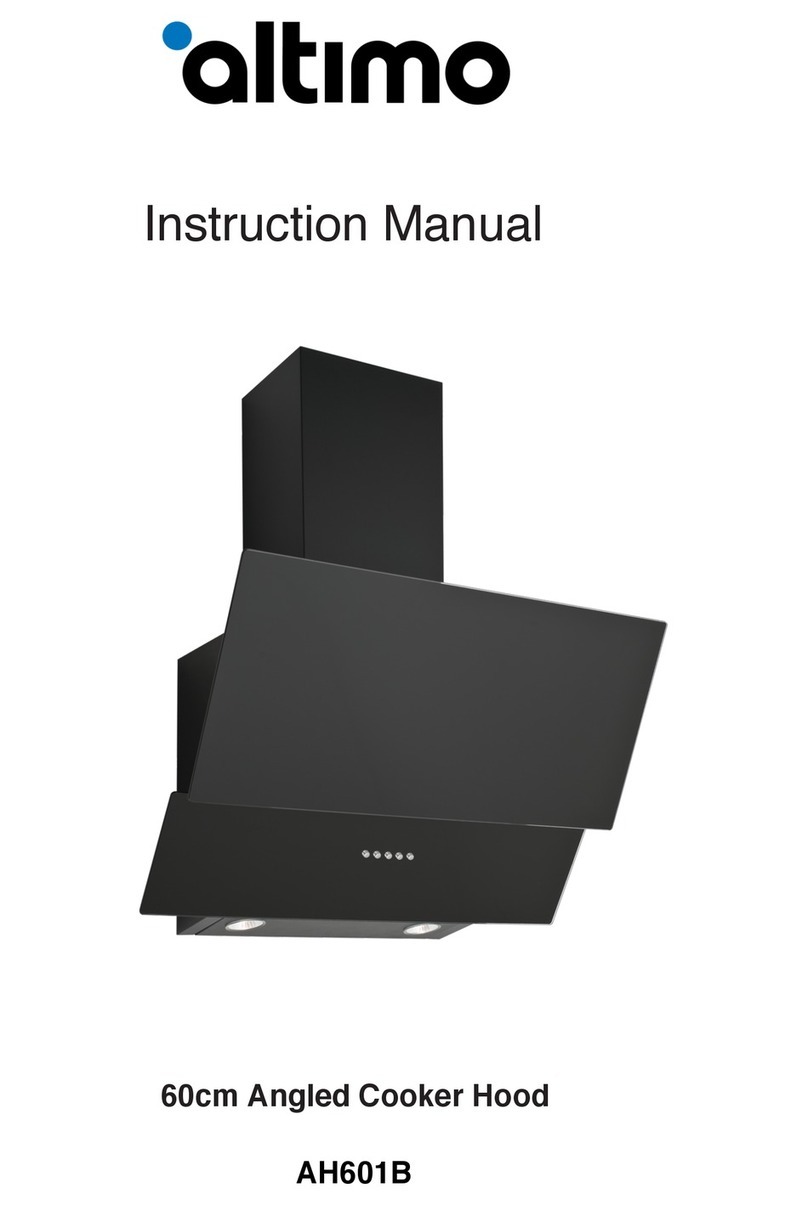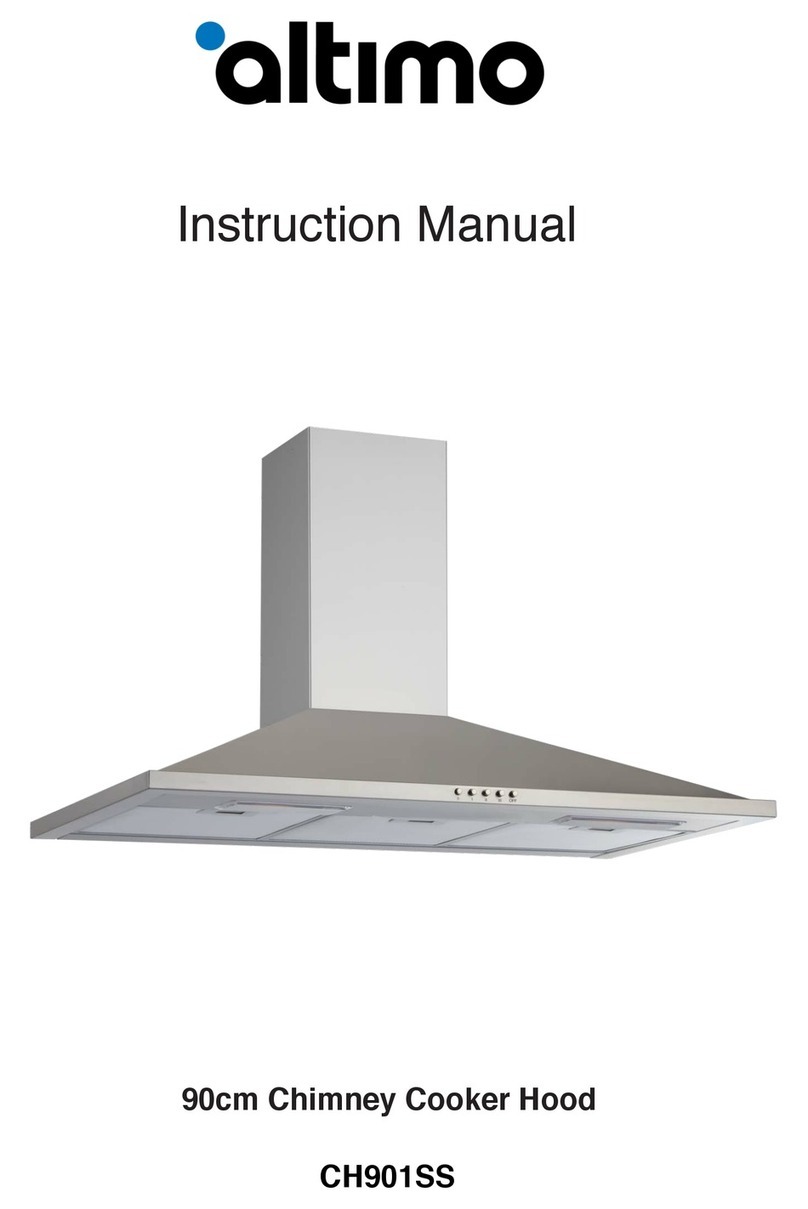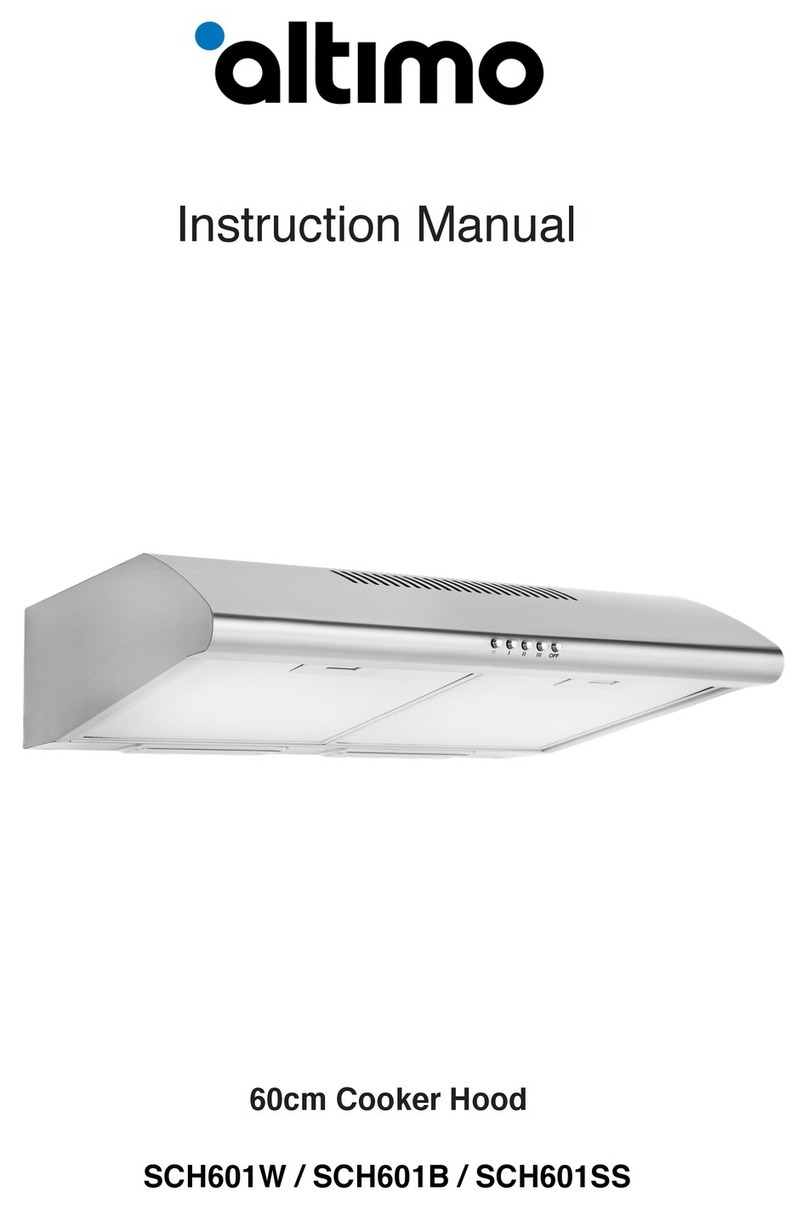
WARNING AND SAFETY PRECAUTIONS
• In case of fire, isolate the power to the hood and any other cooking devices.
(unplug the appliance or turn off at the main switch).
• Keep your product clean. Build-up of deposits can increase the risk of fire.
• Isolate the appliance before any maintenance operations.
(Unplug the appliance or turn off at the main switch.)
• When extracting air using an electric cooker hood or other devices operating
simultaneously, the negative pressure in the room must not exceed 4 Pa (4 X 10
bar). Ensure adequate ventilation.
• Care and attention must be observed when using this appliance simultaneously
with other appliances affecting ambient air. By its nature of discharging ambient
air in a limited environment this hood could adversely affect the levels of air
increasing risk of combustion. Items to be considered include burners of gas,
diesel, coal, wood, burning heaters, and shower heaters. This warning applies to
discharged air only and does not apply to re-circled uses without flue. Gas or fuel
oil burning appliances, such as room heaters, which share the same
environment with your product, must be fully insulated from the exhaust of this
product or they must be hermetical.
• When connecting a flue to your product use ducting pipes with a diameter of
150mm or 120mm. Minimise both the length and number of connections to the
outside to promote good flow and improved operation.
• Children must not play with the appliance.
• For your safety use a fuse rated ‘MAX 6A’ for your hood.
• Handle and dispose of packaging materials safely, as they pose a risk keep
them away from children.
• Any damage to the power supply cable must be replaced by the manufacturer,
an authorised service location or any other qualified person, to avoid any
dangerous situation.
• In case of fire, isolate the cooker hood and cooking appliances, cover the flame
with a damp cloth. Never use water to extinguish the fire.
• When cooking appliances are in operation accessible parts could be hot.
• This appliance is not intended to be used by people with physical, sensory and
mental disabilities (including children) or those who have not adequate
experience and knowledge regarding its use, unless they are under the
supervision of a person responsible for the safety of the appliance.
• It is a requirement that installation of the hood must provide minimum distance of
65cm between the bottom surface of the hood and any electric cook top and
75cm between any gas ranges or cookers burning other fuels.
• Output air must be ducted unique to this product, do not connect to shared air
ducts.






